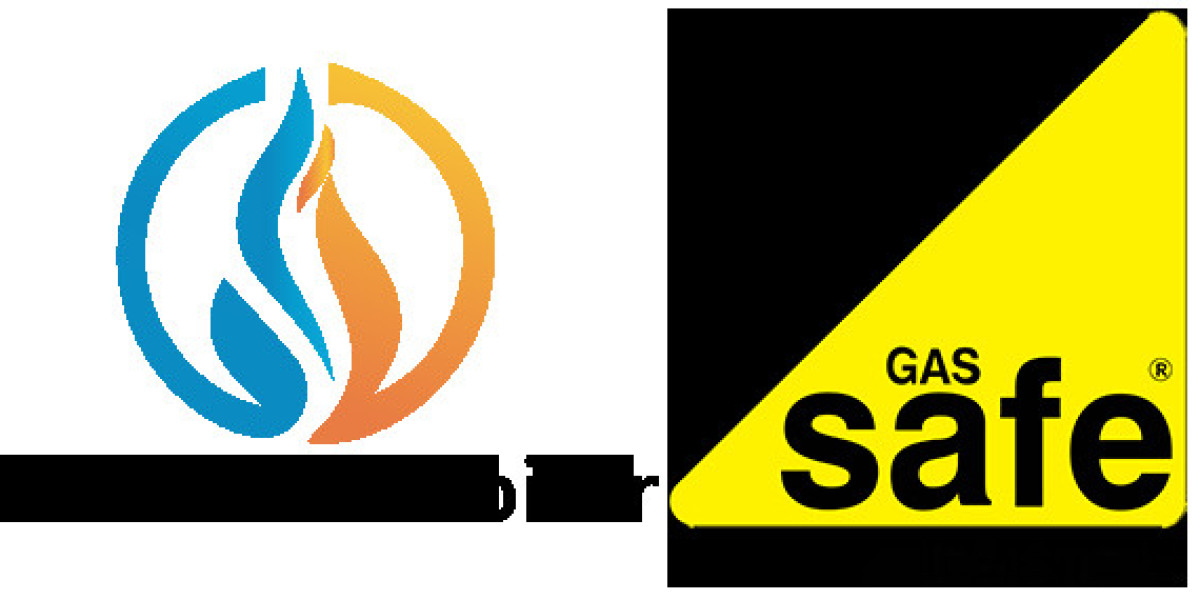Introduction
In today's world, electrical safety is a paramount concern for homeowners, landlords, and business owners alike. Ensuring that electrical systems are safe, functional, and up to code is not just a matter of compliance, but also one of safety and peace of mind. This is where the Electrical Installation Condition Report (EICR) comes into play. An EICR is a vital tool that helps in assessing the condition of electrical installations in any property. It identifies any defects, damages, or potentially dangerous conditions, allowing for timely interventions and repairs. In this comprehensive guide, we will delve deep into what an EICR is, its importance, the testing process, and the benefits it offers.
What is an Electrical Installation Condition Report (EICR)?
An Electrical Installation Condition Report (EICR) is a formal document that is produced following an assessment of the electrical installations within a property. This report is essential for determining the safety and compliance of electrical systems. It highlights any issues, potential hazards, or non-compliances with current electrical standards. EICRs are usually conducted by qualified electricians or approved contractors who meticulously inspect various aspects of the electrical system, from wiring to circuit breakers.
The Importance of EICR Testing
EICR testing is crucial for several reasons. Firstly, it ensures that the electrical installations are safe for continued use. Regular testing helps in identifying any wear and tear, damage, or defects that might have occurred over time. This is particularly important in older properties where the electrical systems might be outdated or have been subject to modifications. Secondly, an EICR helps in maintaining compliance with legal requirements. Landlords, for example, are required by law to ensure that the electrical installations in their rental properties are safe. Lastly, having an up-to-date EICR can enhance the value of a property by providing proof of its safety and reliability.
Who Needs an EICR?
Different types of property owners and occupants need an EICR for various reasons:
- Homeowners: Ensuring the safety of their family and property by identifying potential electrical hazards.
- Landlords: Complying with legal obligations and providing a safe living environment for tenants.
- Business Owners: Meeting health and safety regulations to protect employees and customers.
- Buyers and Sellers: Assessing the electrical condition of a property before purchasing or selling.
The EICR Testing Process
The EICR testing process is thorough and involves several key steps:
- Initial Visual Inspection: The electrician begins with a visual inspection of the electrical installations, looking for any obvious signs of damage or wear.
- Dead Testing: This involves isolating the electrical installation and conducting tests to check the continuity and insulation resistance of the wiring.
- Live Testing: The installation is re-energized to perform tests under normal operating conditions, checking for earth fault loop impedance and other critical factors.
- RCD Testing: Residual Current Devices (RCDs) are tested to ensure they trip within specified times under fault conditions.
- Compilation of the Report: The electrician compiles the findings into the EICR document, categorizing any issues found and providing recommendations for remedial action.
Understanding EICR Codes and Recommendations
The EICR report uses a coding system to indicate the severity of any issues found:
- Code C1: Danger present, immediate remedial action required.
- Code C2: Potentially dangerous, urgent remedial action required.
- Code C3: Improvement recommended, but not urgent.
- FI: Further investigation required without delay.
Benefits of Regular EICR Testing
Regular EICR testing offers numerous benefits:
- Enhanced Safety: Identifying and addressing electrical issues promptly reduces the risk of electrical fires, shocks, and other hazards.
- Compliance: Ensures that the property meets current electrical safety standards and legal requirements.
- Peace of Mind: Knowing that the electrical system is safe provides peace of mind to property owners, occupants, and stakeholders.
- Cost Savings: Early detection of issues can prevent costly repairs and damage in the future.
- Insurance: Some insurance policies require an up-to-date EICR to validate coverage.
How Often Should an EICR be Conducted?
The frequency of EICR testing depends on the type of property and its usage:
- Domestic Properties: Every 10 years or at the change of occupancy.
- Rented Properties: Every 5 years or at the change of tenancy.
- Commercial Properties: Every 5 years or based on the recommendation of the previous report.
- Industrial Properties: Every 3 years or based on the recommendation of the previous report.
Choosing a Qualified Electrician for EICR Testing
Selecting a qualified electrician for EICR testing is crucial for accurate and reliable results. Here are some tips:
- Certification: Ensure the electrician is certified and registered with a recognized regulatory body.
- Experience: Look for electricians with extensive experience in conducting EICRs.
- Reputation: Check reviews and testimonials from previous clients.
- Insurance: Verify that the electrician has appropriate liability insurance.
Common Issues Identified in an EICR
During an EICR, several common issues might be identified, including:
- Outdated Wiring: Old or deteriorated wiring that does not meet current safety standards.
- Overloaded Circuits: Circuits that are carrying more electrical load than they are designed for.
- Poorly Installed or Damaged Electrical Components: Such as switches, sockets, and lighting fixtures.
- Inadequate Earthing and Bonding: Essential for the safety of the electrical installation.
Remedial Actions Following an EICR
If the EICR identifies any issues, remedial actions should be taken promptly. These actions might include:
- Upgrading Wiring: Replacing old or damaged wiring to meet current standards.
- Reconfiguring Circuits: Ensuring circuits are appropriately loaded and protected.
- Repairing or Replacing Components: Fixing or replacing faulty switches, sockets, and other electrical components.
- Improving Earthing and Bonding: Enhancing the safety of the electrical system by improving earthing and bonding.
Cost of EICR Testing
The cost of EICR testing can vary depending on several factors:
- Property Size: Larger properties typically require more extensive testing.
- Complexity: More complex electrical systems may take longer to test.
- Location: Costs can vary based on geographic location and local market rates.
- Electrician's Fees: Different electricians may charge different rates based on their experience and qualifications.
Preparing for an EICR
Preparing for an EICR can help ensure a smooth and efficient testing process:
- Access: Ensure that the electrician has easy access to all parts of the electrical installation.
- Documentation: Provide any existing documentation or previous reports related to the electrical system.
- Communication: Discuss any known issues or concerns with the electrician beforehand.
EICR and Property Value
An up-to-date EICR can positively impact the value of a property. Buyers and investors are more likely to be attracted to properties with a recent EICR, as it provides assurance of electrical safety and reduces the risk of future electrical problems. Additionally, a satisfactory EICR can be a strong selling point in property transactions.
Legal Requirements for Landlords
For landlords, EICR testing is not just a best practice but a legal requirement. The Electrical Safety Standards in the Private Rented Sector (England) Regulations 2020, for instance, mandate that landlords must ensure the electrical installations in their properties are inspected and tested at least every five years. Non-compliance can result in significant fines and legal action.
EICR in Commercial and Industrial Properties
Commercial and industrial properties often have more complex electrical systems that require regular inspection and maintenance. EICR testing in these environments ensures compliance with health and safety regulations, minimizes downtime caused by electrical faults, and protects employees and assets from electrical hazards.
Technological Advances in EICR Testing
Technological advancements have made EICR testing more efficient and accurate. Modern testing equipment allows electricians to perform tests quickly and precisely, reducing the margin for error. Additionally, digital reporting tools enable the creation of detailed and easily understandable reports, enhancing transparency and communication.
Training and Certification for Electricians
Electricians conducting EICR testing should undergo rigorous training and certification. This ensures they are knowledgeable about the latest electrical standards and testing procedures. Ongoing professional development is also essential to keep abreast of technological advances and regulatory changes.
EICR and Energy Efficiency
While the primary focus of an EICR is safety, it can also provide insights into the energy efficiency of a property's electrical system. Identifying outdated or inefficient components can lead to recommendations for upgrades that not only enhance safety but also reduce energy consumption and costs.
FAQs
What is an EICR?
An EICR, or Electrical Installation Condition Report, is a detailed assessment of the electrical installations within a property, aimed at ensuring safety and compliance with current standards.
Why is an EICR important?
An EICR is important because it identifies potential electrical hazards, ensures compliance with legal requirements, and provides peace of mind by confirming the safety of electrical systems.
How often should an EICR be conducted?
The frequency of EICR testing depends on the type of property. For domestic properties, it is recommended every 10 years; for rented properties, every 5 years; and for commercial properties, every 5 years or as recommended.
What are the common issues identified in an EICR?
Common issues include outdated wiring, overloaded circuits, poorly installed or damaged electrical components, and inadequate earthing and bonding.
Who can conduct an EICR?
An EICR should be conducted by a qualified electrician or an approved contractor with certification and experience in electrical inspections.
What should I do if my EICR identifies issues?
If issues are identified in an EICR, remedial actions should be taken promptly. This may include upgrading wiring, reconfiguring circuits, repairing or replacing components, and improving earthing and bonding.
Conclusion
The Electrical Installation Condition Report (EICR) is an essential tool for ensuring the safety and compliance of electrical systems in all types of properties. Regular EICR testing helps identify potential hazards, comply with legal requirements, and provide peace of mind to property owners and occupants. By understanding the importance, process, and benefits of EICR testing, you can take proactive steps to maintain a safe and efficient electrical system in your property. Investing in regular EICR testing is not just a matter of compliance; it is a commitment to safety, reliability, and the long-term value of your property.



